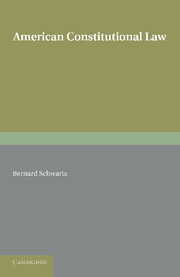Summary
When an American begins his study of the British constitution he may find some difficulty in understanding it. He is told that the Sovereign is divorced from all politics, but when he reads the Queen's Speech at the opening of Parliament it seems to him that she is advocating legislation which is to be enacted in the coming session. Again, he finds that the House of Lords still has great powers of obstruction, but that these are not exercised even when there is a Labour government in power. Finally, although he is told that the Rule of Law, protection against arbitrary arrest, freedom of speech and of the press, are essential elements in the English polity, he is also informed that they receive no constitutional protection and that they can be abolished by Parliament at any time. It is only after further study that he begins to realize that law in the books and law in action may be two entirely different things.
An Englishman who seeks to understand the American system of government is in even greater danger of committing a similar error, for he is inclined to think that all that he needs to do is to read the Constitution of 1789 and its twenty-two amendments, but, unfortunately for him, he will soon find out that this will land him in a morass of misunderstanding and error. It ought to be obvious that a document which contains less than 8000 words can hardly be more than an outline. This is not to decry the Constitution, for if its authors had attempted to create a detailed governmental structure it would not have survived the stresses of the century and a half during which the thirteen States along the Atlantic coast stretched across the continent, and the population increased fiftyfold. To understand this Constitution it is, therefore, necessary to study its history, and, in particular, its development in the decisions of the Supreme Court, because, as the late Mr Justice Jackson has said, the American system is, in large part, ‘government by lawsuit’.
- Type
- Chapter
- Information
- American Constitutional Law , pp. ix - xiiPublisher: Cambridge University PressPrint publication year: 2013

